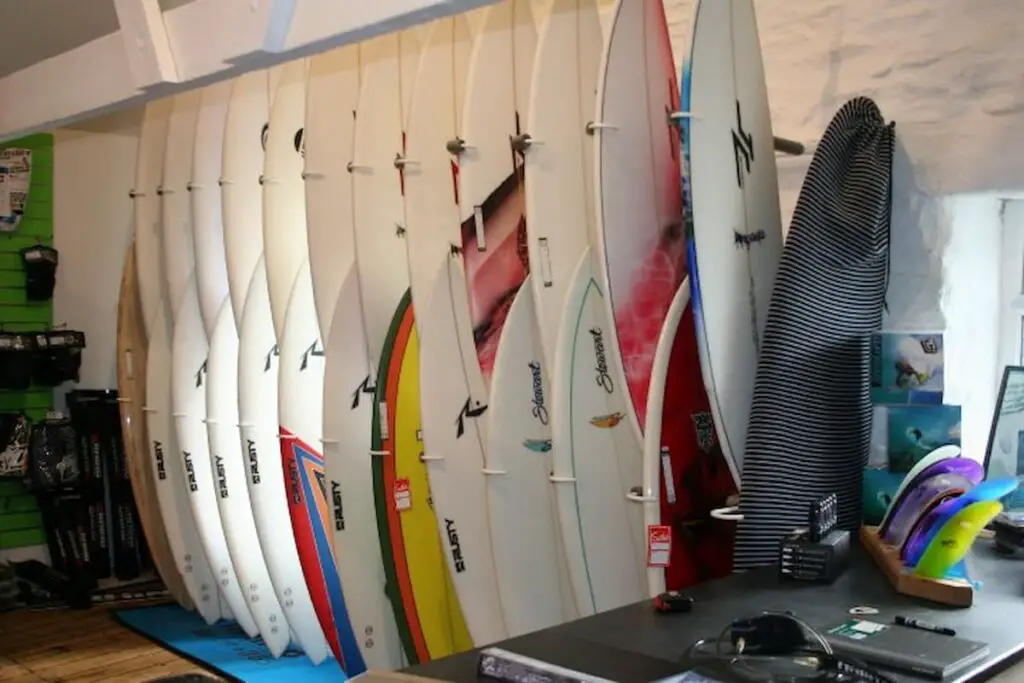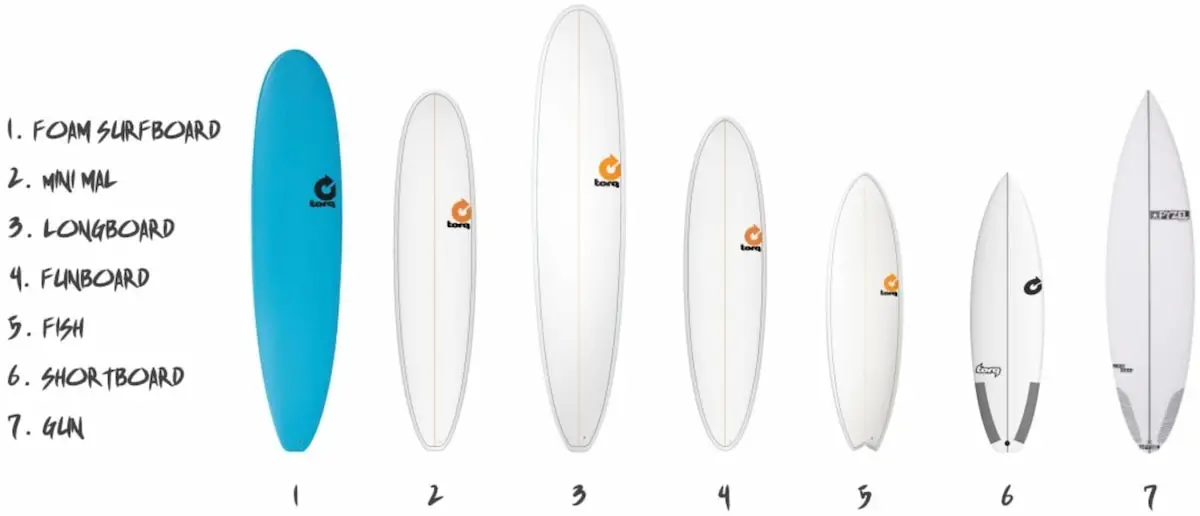There are several types of surfboards, each designed for specific wave conditions and styles of surfing. Here are some of the most common types:
Shortboard:
These are the most common type of surfboard and are used for high-performance surfing in waves of all sizes. They are typically less than 7 feet long and have a pointed nose, sharp rails, and a narrow tail.
Longboard:
These are longer surfboards that range from 8 to 12 feet in length. They have a rounded nose and a wide tail, making them more stable and easier to paddle. They are often used for cruising and more traditional, laid-back styles of surfing.
Fish:
These surfboards are shorter and wider than traditional shortboards, with a wide nose and a swallowtail. They are designed for surfing in smaller, mushier waves, and are known for their speed and maneuverability.
Gun:
These are long, narrow surfboards designed for riding big waves. They are typically longer than 8 feet and have a pointed nose, narrow tail, and a lot of rocker (curvature). They are made for experienced surfers who want to take on the most challenging waves.
Funboard:
These surfboards are a hybrid between a longboard and a shortboard, usually between 7 and 8 feet in length. They have a wider nose and tail than a shortboard, making them more stable, but are still small enough to perform high-performance maneuvers.
Mini Malibu:
These are a smaller version of the traditional longboard, usually between 7 and 8 feet in length. They are designed for beginners or intermediate surfers who want a more stable board that is easy to paddle and catch waves on.
Soft-top:
These surfboards have a soft foam deck, making them a good option for beginners or anyone who wants a more forgiving board. They are also commonly used in surf schools and rental shops.
How to choose the right surfboard for me

Choosing the right surfboard is essential to ensure that you have an enjoyable surfing experience. The ideal surfboard for you will depend on several factors, including your skill level, weight, height, and the type of waves you plan to surf. Here are some tips to help you choose the right surfboard for you:
- Consider your skill level: If you are a beginner, you will want to start with a surfboard that is long and wide, which will provide you with stability and make it easier to catch waves. If you are more experienced, you may want to try a shorter and narrower board that allows for greater maneuverability.
- Determine your weight: Your weight is an important factor in choosing the right surfboard. A heavier person will need a larger board to support their weight, while a lighter person can choose a smaller board.
- Look at your height: Your height is also an important consideration. Taller surfers may want to consider longer boards that provide more surface area for their body to rest on.
- Think about the waves you will be surfing: The type of waves you plan to surf will also impact the type of surfboard you should choose. For smaller waves, a shorter board may be ideal, while bigger waves may require a longer board.
- Test different boards: Finally, it’s essential to test different boards before making a final decision. Most surf shops offer rentals, and you can also borrow boards from friends to get a feel for what works best for you.
By taking these factors into consideration, you can choose the right surfboard that will help you to catch more waves and enjoy your surfing experience.
